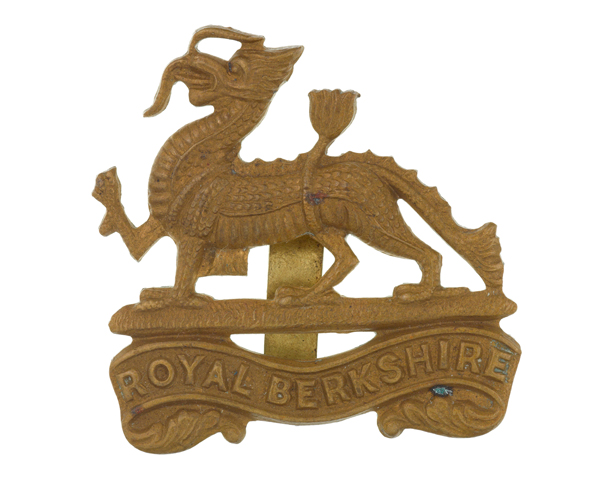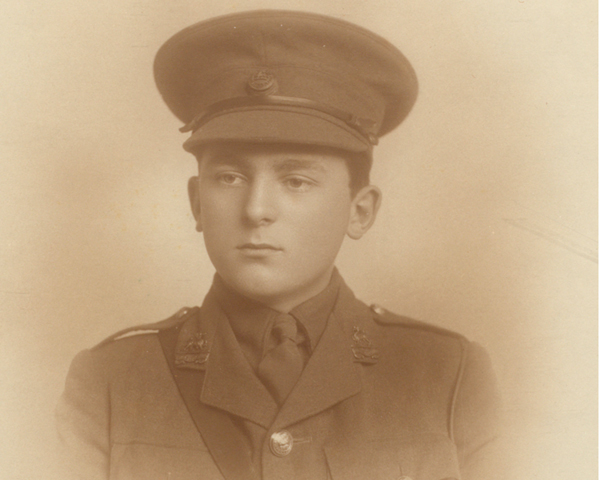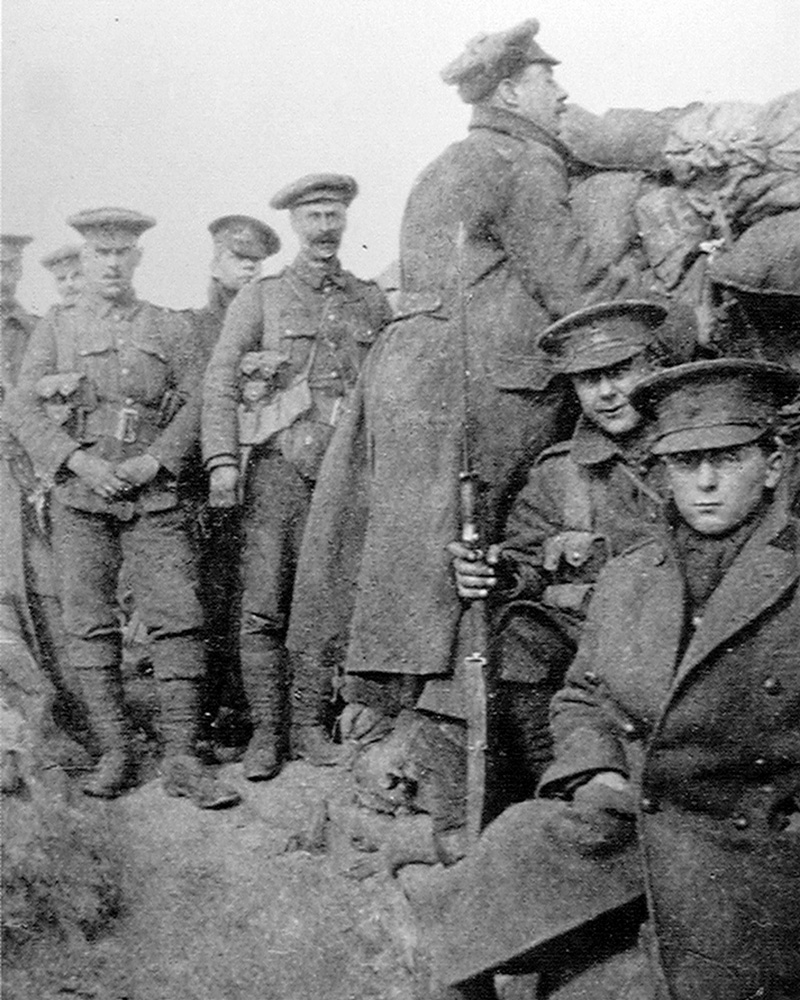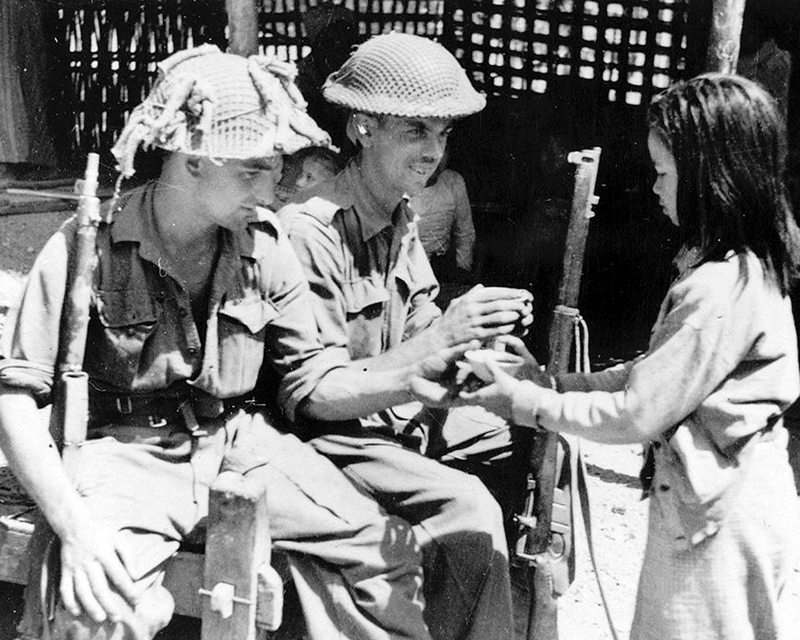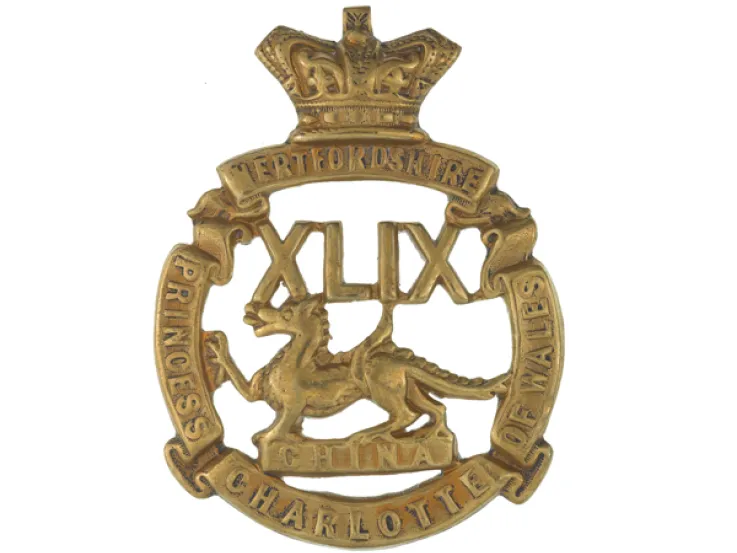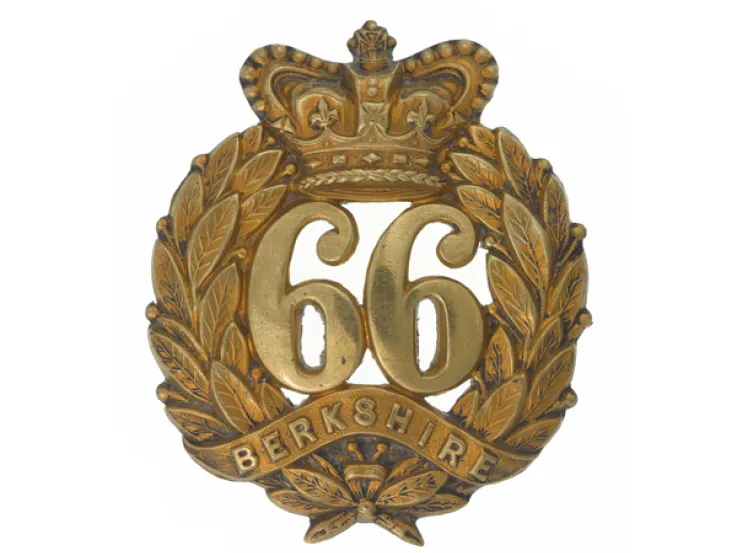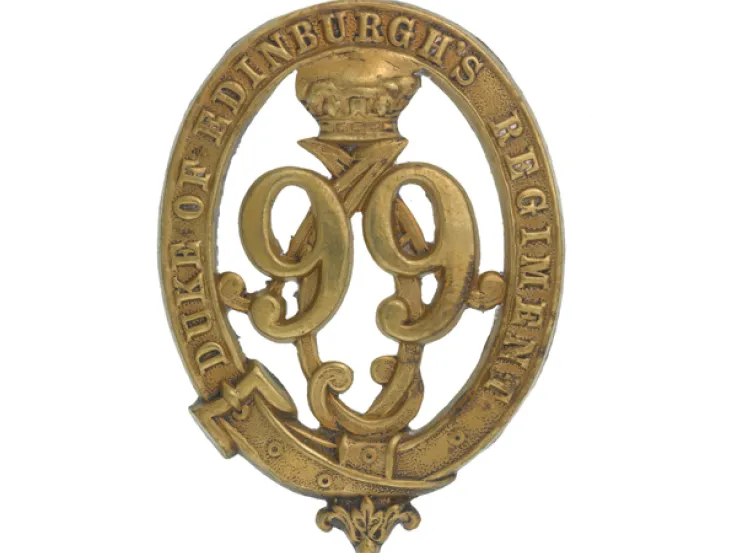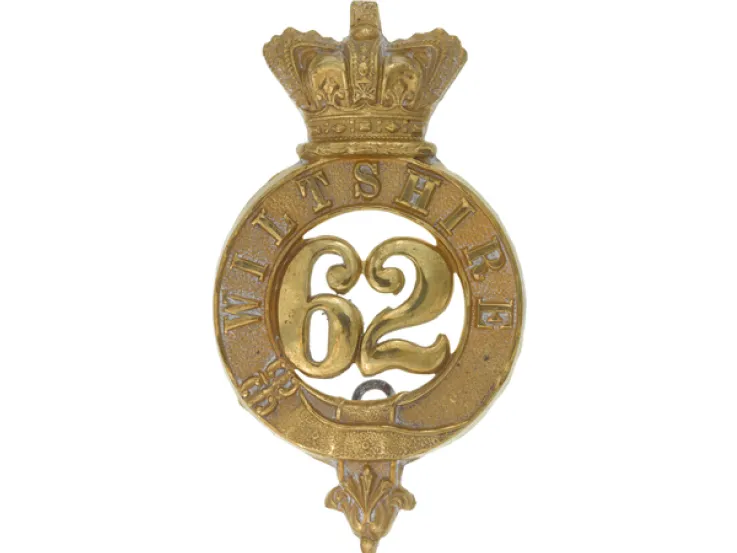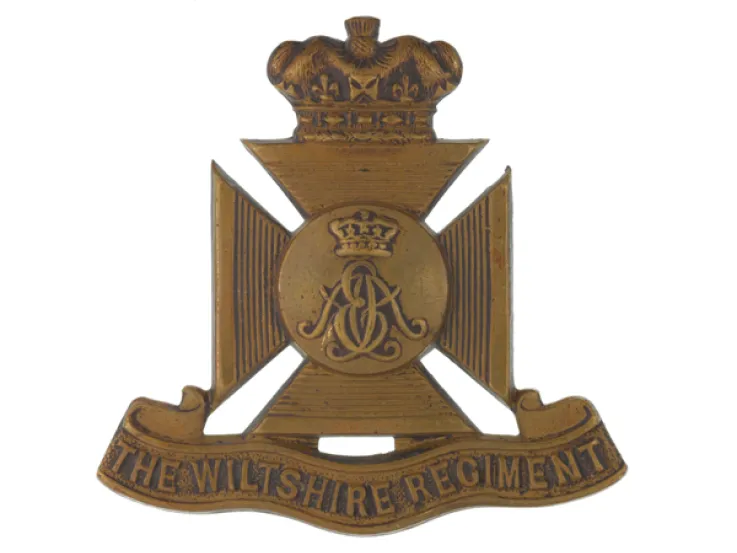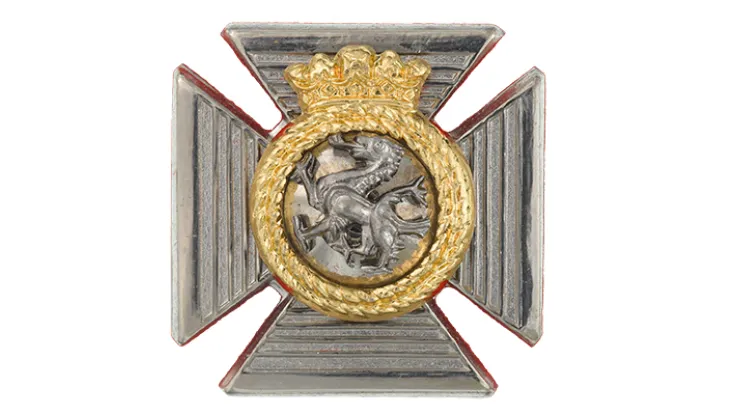Explore more from Regiments and Corps
The Royal Berkshire Regiment (Princess Charlotte of Wales’s)
3 minute read
Origins
During the 1881 reforms, a new county regiment for Berkshire was formed by merging the 49th (Princess Charlotte of Wales's) (Hertfordshire) Regiment and the 66th (Berkshire) Regiment. These became the new unit's 1st and 2nd Battalions respectively.
1st Battalion deployed to Egypt in 1882. Its gallantry three years later at Tofrek (1885) in the Sudan gained the regiment promotion to Royal status. It also fought at Ginnis (1885) and Suakin (1888) during that campaign. Garrison service in Bermuda, Canada, Barbados, St Lucia, Jamaica, Gibraltar and Ireland followed over the next two decades.
After garrison service in India and Britain, 2nd Battalion was posted to South Africa in 1897. It later fought throughout the Boer War (1899-1902) in the Cape Colony and the Orange Free State. This was followed by postings to Egypt and then India.
First World War
1st Battalion was back in Britain at the outbreak of the First World War (1914-18), deploying straight to the Western Front. It was joined by 2nd Battalion in November 1914, with both battalions remaining there throughout the conflict.
The regiment also raised three Territorial, five New Army and four labour battalions during the war. These served in Italy and Salonika as well as at home and on the Western Front.
Inter-war
For 2nd Battalion, 1919 was a busy year. One company was sent to fight the Bolsheviks during the Russian Civil War (1917-22). The rest moved to Ireland for service in the Irish War of Independence (1919-21).
In 1926, it was assigned to the occupation forces in Germany for two years. Service in Egypt, Palestine and India followed.
Meanwhile, 1st Battalion was posted to Iraq and then Persia (now Iran) in 1920. It then spent 12 years in India, before returning to the Sudan in 1933.
Second World War
2nd Battalion remained in India throughout the Second World War (1939-45), apart from service during the Burma campaign in 1943-45.
1st Battalion was in Britain at the outbreak of the conflict. It deployed to France immediately, only to be evacuated from Dunkirk in June 1940. It joined 2nd Battalion in India in 1942 and for the rest of the war also fought in Burma. Both battalions won several honours in that theatre, including the Battles of Imphal and Kohima (1944).
The regiment also provided nine Territorial battalions between 1939 and 1945. These served at home stations, in Iraq (1942-43), Sicily (1943), Italy (1943-45) and North West Europe (1944-45), where 5th Battalion landed at Juno Beach on D-Day (1944).
Legacy
In 1959, it merged with The Wiltshire Regiment (Duke of Edinburgh's) to form The Duke of Edinburgh's Royal Regiment (Berkshire and Wiltshire).
Regimental museums
The National Army Museum works with a network of Regimental and Corps Museums across the UK to help preserve and share the history and traditions of the Army and its soldiers.
Discover more about The Royal Berkshire Regiment (Princess Charlotte of Wales’s) by visiting The Rifles Berkshire and Wiltshire Museum in Salisbury.


